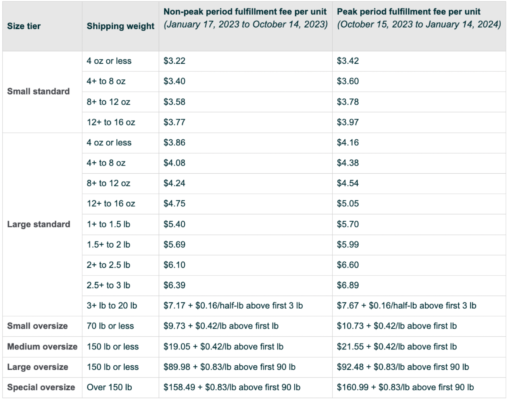
Understanding Amazon FBA Fees
In the dynamic world of e-commerce, Amazon’s Fulfilled by Amazon (FBA) program has emerged as a game-changer for many entrepreneurs. However, amidst the excitement of launching a product on the world’s largest online marketplace, understanding the intricate fee structures associated with FBA is crucial. This article delves into common misconceptions, pitfalls, and strategies to optimize your FBA experience.
Initial Misunderstanding of Amazon FBA Fees Structures: Unraveling the Mystery
One of the most common stumbling blocks for new FBA sellers is a lack of clarity regarding the understanding Amazon FBA fees structures. While the allure of Amazon’s vast customer base is undeniable, the associated costs can catch newcomers off guard. It’s imperative to comprehend the various fees such as referral fees, fulfillment fees, and storage fees. These charges are not arbitrary; they are meticulously calculated based on the size, weight, and category of your product.
Understanding Amazon FBA Fees Avoiding Costly Surprises: The Importance of the FBA Calculator
To mitigate the risk of overspending on fees, utilize Amazon’s FBA calculator. This invaluable tool provides a detailed breakdown of the fees associated with each product. By inputting key metrics like product dimensions, weight, and category, you can accurately estimate your expenses. Incorporating this into your product research phase ensures that you make informed decisions about which products to sell and helps in setting competitive prices.
Understanding Amazon FBA Fees
Modified Product, Unforeseen Fees: Navigating Changes in Your Catalog
In the ever-evolving world of e-commerce, adapting your product offerings is often necessary. However, it’s crucial to understanding Amazon FBA fees the potential fee implications of modifying an existing product. Changes in size, weight, or category can lead to adjustments in fulfillment and storage fees. Being aware of these potential changes allows you to make informed decisions about product alterations.
Understanding Amazon FBA Fees Long-term Storage Fees: Avoiding the Pitfalls of Overstocking
Understanding Amazon FBA fees Long-term storage fees can be a silent profit killer for FBA sellers. After 270-365 days in the Amazon warehouse, products incur additional charges. To avoid these hefty fees, it’s crucial to monitor your inventory closely and implement effective inventory management strategies. Consider employing tools and software that provide real-time insights into your stock levels, allowing you to make timely decisions to prevent overstocking.
Amazon Seller Account Setup: Separation is Key
A common oversight among new sellers is using their personal buyer account to set up their seller account. This can lead to the merging of logins, causing confusion and potential security risks. To maintain a clear separation between your buyer and seller activities, it’s advisable to create a separate email address for your seller account. Additionally, considering the establishment of an LLC can provide an extra layer of separation and protection for your business.
Consideration of Chinese Holidays: A Crucial Element in Inventory Planning
Navigating the global supply chain requires a keen understanding of various factors, including Chinese holidays. Neglecting these holidays can lead to delays in production and restocking, potentially impacting your sales and customer satisfaction. By keeping track of Chinese holidays and factoring them into your production and shipping timelines, you can ensure smoother operations and a consistent supply of inventory.
Understanding Amazon FBA Fees Handling Large Orders During Q4: A Balancing Act
The holiday season, particularly Q4, is a time of heightened sales activity on Amazon. While large orders can be a boon for your business, they can also lead to significant storage fees. It’s essential to strike a balance between meeting customer demand and managing your costs effectively. Consider breaking down large orders into smaller shipments, strategically timing your restocks, and utilizing Amazon’s storage solutions to minimize expenses.
Seasonal Product Management: Adapting to the Unpredictable
Dealing with seasonal products presents a unique set of challenges, especially in unpredictable circumstances like the recent pandemic. It’s crucial to remain adaptable and proactive in your approach. Keep a close eye on market trends, adjust your inventory levels accordingly, and explore diversification strategies to maintain a steady stream of revenue throughout the year.
Conclusion: Your Journey to Amazon Success
Embarking on the journey of selling private label products on Amazon is a thrilling endeavor filled with opportunities and challenges. We hope this comprehensive guide has provided you with valuable insights into navigating the intricacies of Amazon FBA fees. Should you have any further questions or require additional guidance, please don’t hesitate to reach out. Subscribe to our channel for regular updates and in-depth insights to support you on your Amazon selling journey.
Read our full guide here: Making pound 100000 with Amazon FBA: Three Challenging but Rewarding Steps to Reach Your Goal
